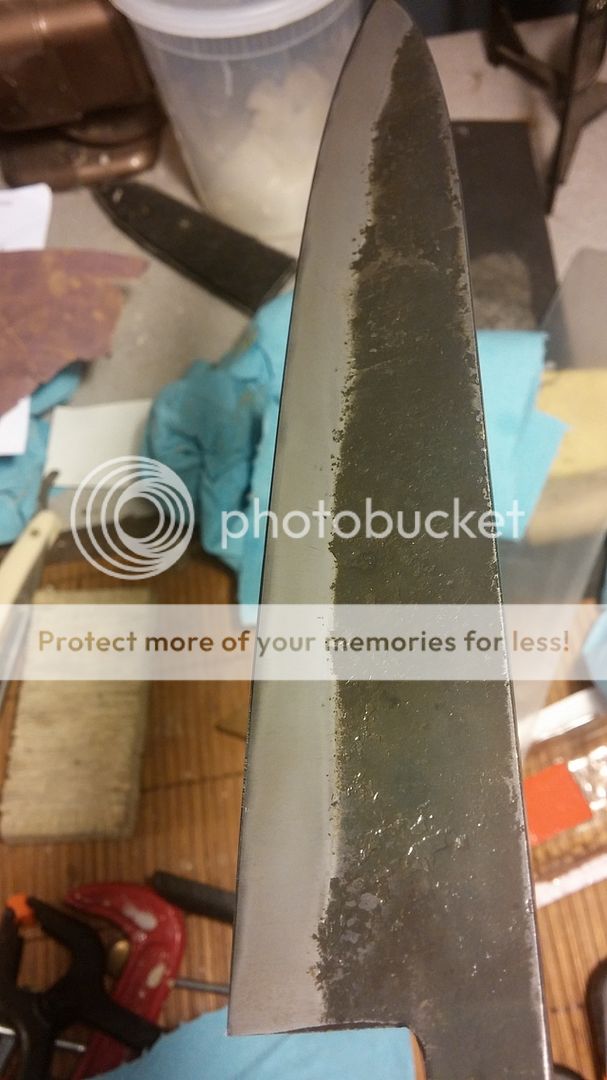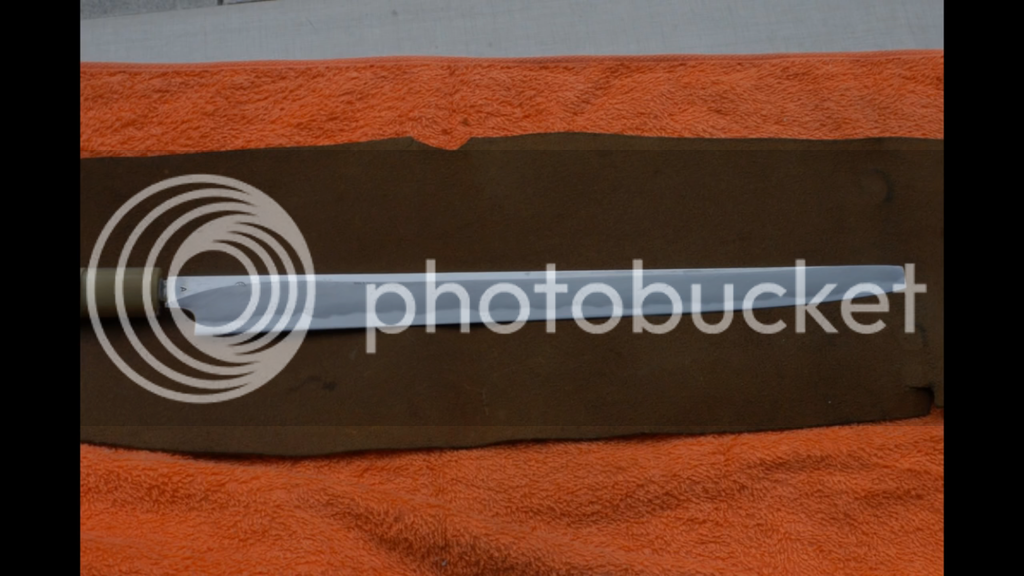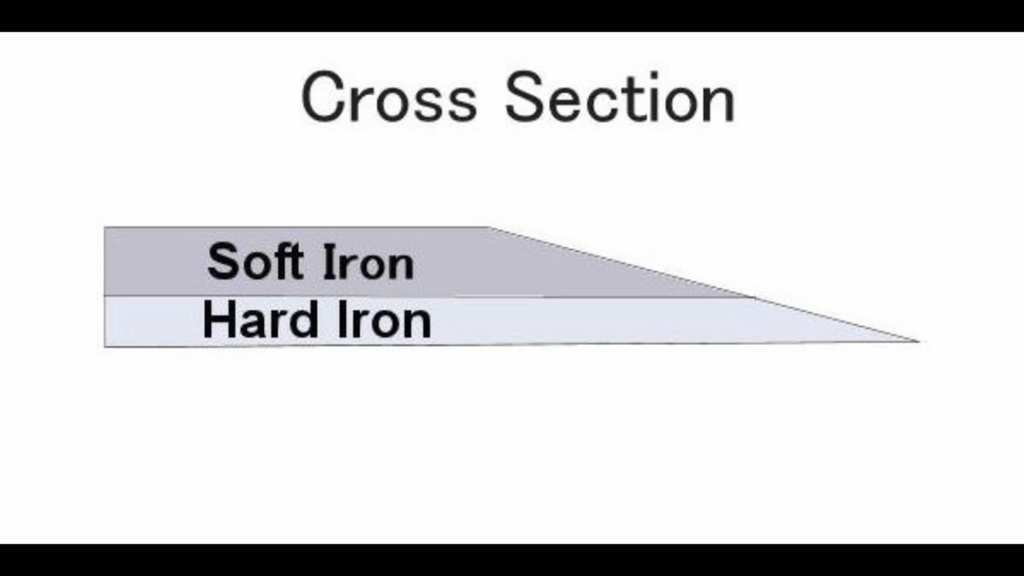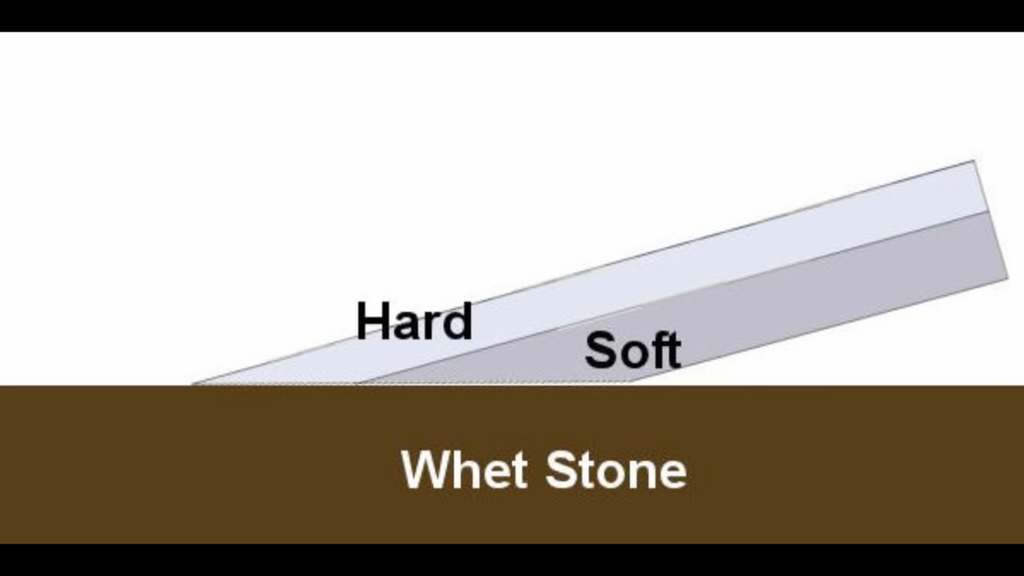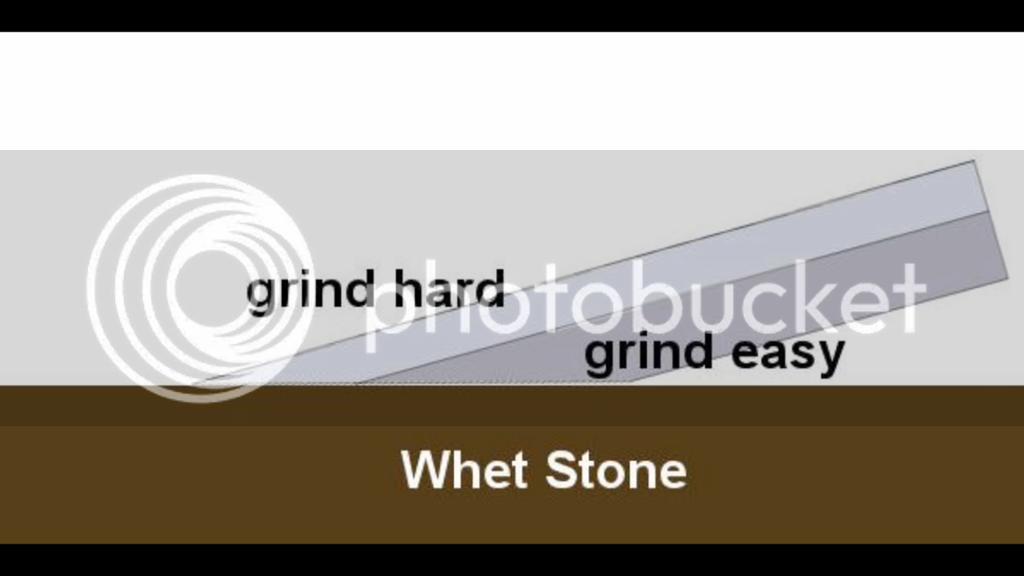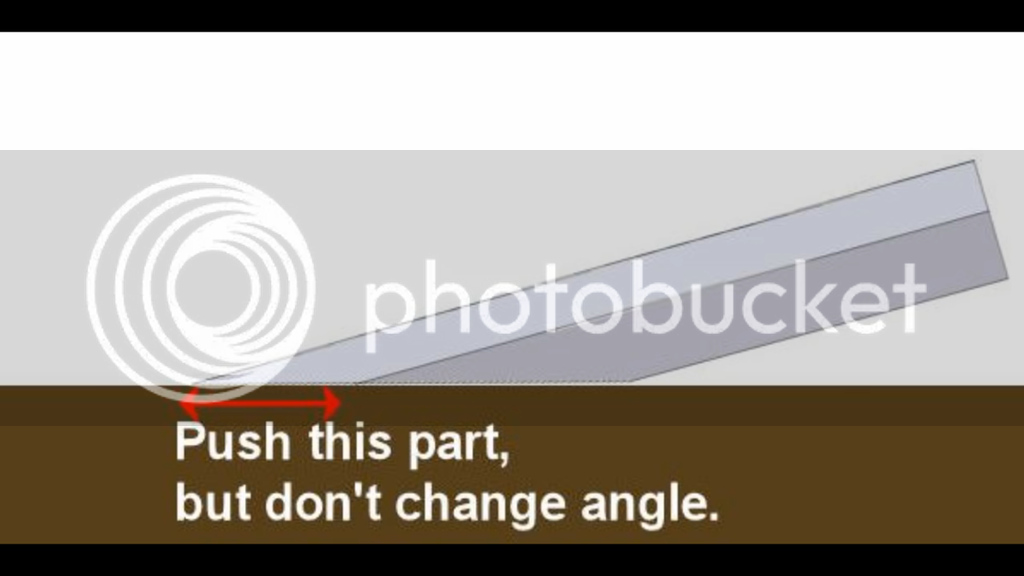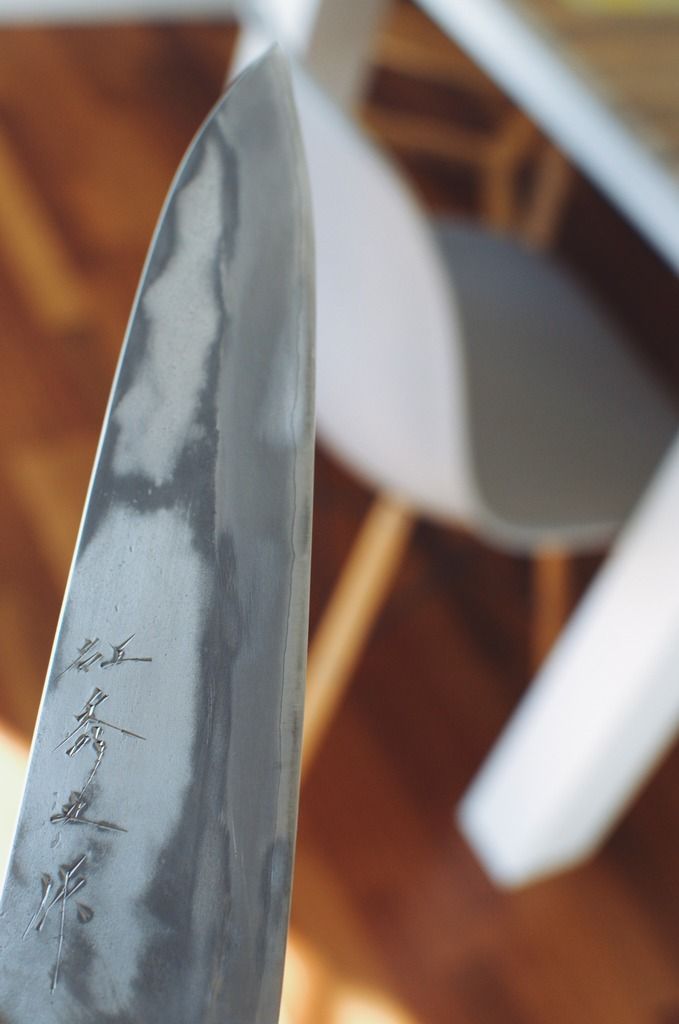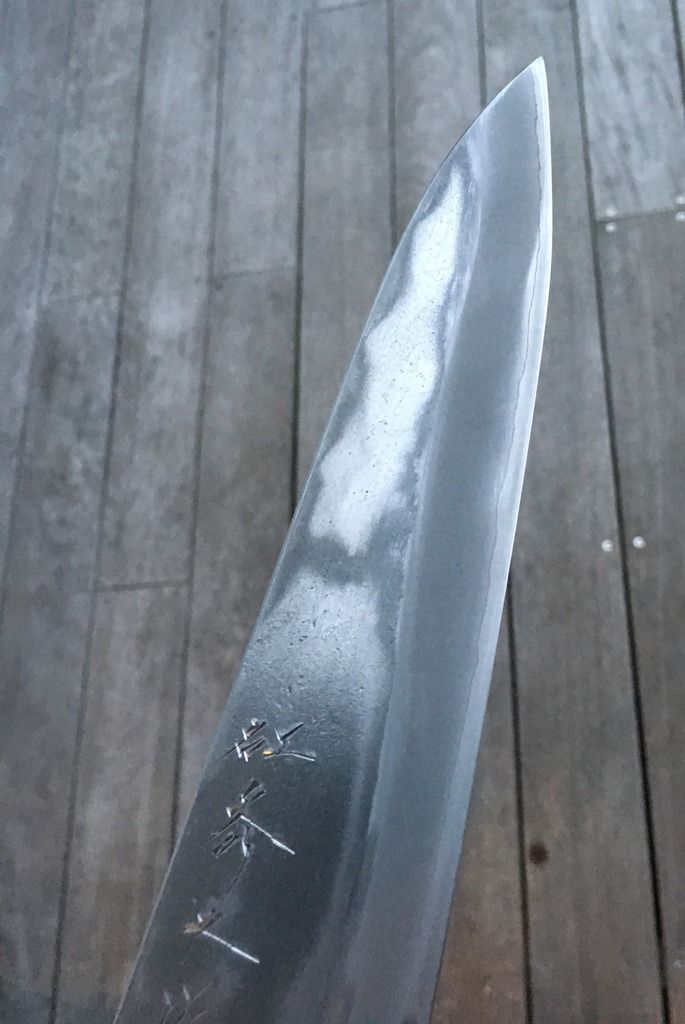- Joined
- Jan 16, 2016
- Messages
- 492
- Reaction score
- 60
So up until now I have generally just been concerned with tending to the cutting edges of my knives, but as I acquire more wide and single bevel knives, as well as natural stones, I'm starting to have more of an interest in polishing, and the finish left on the face of my blades.
As such, I have a few questions about polishing basics, techniques and tools used.
Something that I have come across and am unsure of how to go about tackling, is how to get a consistent finish on a face that isn't flat. Such as on my kono fujiyama blue #2, which I'm sure some of you know isn't a 'true' wide bevel, so when the blade road is put flat to the stones, I grind parts near the edge, and near the 'shinogi'. Is the use of fingerstones the only way to get a consistent finish? The same problem arises with any blade with any concavity, such as an 's' grind, or just any overgrind I suppose, so how do you approach this?
Any and all polishing tips and advice welcome! Thanks kkf!
As such, I have a few questions about polishing basics, techniques and tools used.
Something that I have come across and am unsure of how to go about tackling, is how to get a consistent finish on a face that isn't flat. Such as on my kono fujiyama blue #2, which I'm sure some of you know isn't a 'true' wide bevel, so when the blade road is put flat to the stones, I grind parts near the edge, and near the 'shinogi'. Is the use of fingerstones the only way to get a consistent finish? The same problem arises with any blade with any concavity, such as an 's' grind, or just any overgrind I suppose, so how do you approach this?
Any and all polishing tips and advice welcome! Thanks kkf!





